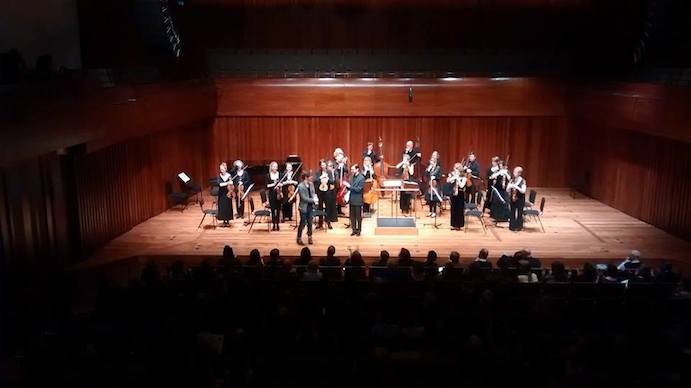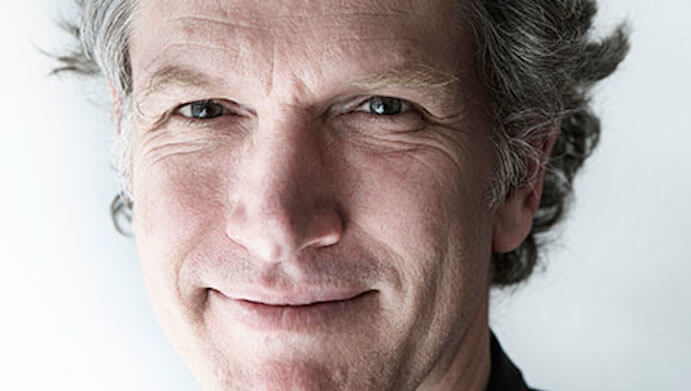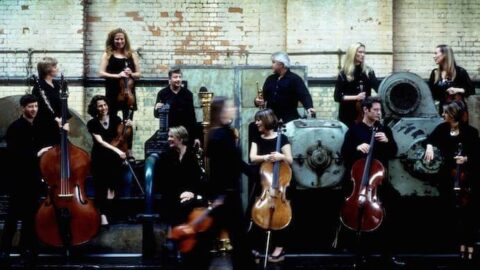There are many examples of ensembles struggling to successfully pair music by living composers with music from past centuries, but the Britten Sinfonia is one ensemble that always seems to do this in ways that benefit all of the music involved. Their recent tour, which started at London’s Milton Court Concert Hall on 20th March, was a quintessential example of their carefully crafted and vibrant programming. The concert was made up of pieces that protested simplicity on their surface, while offering deep emotion and complexity at their core.
The evening opened with the too-rarely performed Pietro Locatelli. Locatelli was both a composer and violinist, sometimes referred to as “the Paganini of the eighteenth century.” His Concerto Grosso Op. 1 No. 11 was written in 1721. Programme notes are always a tricky thing to get right, and in this case the rather academic writing sold Locatelli’s piece short. The music here was simple and stately, but it was also highly engaging and imaginative. The playfulness with which the concertino soloists traded witty phrases back and forth with the rest of the orchestra was frivolous and joyful. Some of this performance’s enchantment was due to the fact that it was performed un-conducted. Is there anything more wonderful than watching an orchestra perform as chamber musicians? Without a conductor, every member of the ensemble was listening deeply and responding to one another with an intimacy that drew the audience in.

Locatelli was followed by two premieres– the World premiere of Tom Coult’s My Curves are not Mad, and the London premiere of Hans Abrahamsen’s Double Concerto for violin, piano and strings. Coult winningly describes his recent signing to Faber Music as “indecently thrilling.” The truth is that he represents one of the most exciting compositional voices emerging in the UK today. What is so striking about Coult’s music is that it is simple and familiar, while equally unique and perplexing. The material for My Curves are not Mad was unassuming: almost everything in the piece related to two intervals (a major-third & minor-second, which also appeared inverted as a minor-seventh) and a rising scale. This scale appeared heterophonically again and again, yet grew in tension and interest as each entry was slightly changed. This Bach-like inventiveness, hinting strongly at the familiar while constantly transforming under the surface makes Coult’s music a constant source of delight.
The final piece on the first half was the London premiere of Abrahamsen’s double concerto. The soloists were pianist Alasdair Beatson and the Sinfonia’s leader for the evening, Thomas Gould. Aside from the almost insane physical requirements of the programme (Gould was the soloist for the Goldberg Variations to follow, and had already led the orchestra in the Locatelli and Coult), Gould is well known to UK audiences as a musician of unusual breadth, as at home in the music of Bach as he is Abrahamsen, and indeed, Man Overboard. The amount of color and committed charisma that both soloists brought to Abrahamsen’s music was truly moving.

Abrahamsen’s piece, though, didn’t quite achieve the same conviction, intimacy and attention-holding character of the first two pieces. This music is so daring in its sparsity that it demands performances taken to the committed extremes it is composed with. While still played very beautifully, perhaps it was not quite courageous enough to really achieve the magical atmosphere Abrahmsen’s music can call forth when it really sings through.
I had to leave at the interval of this concert, and so was not around to hear Gould and the Sinfonietta perform Sitkovetsky’s transcription of the Goldenberg Variations. I did purchase a CD, though. (It’s also available on Spotify). Listening later, I was struck by the ways a transcription recontextualizes music in unexpected ways. For example, listening to the fourteenth variation, I was constantly expecting the strings to break out into the third movement of Sibelius’ Fifth Symphony. Certainly something I’ve never heard before in the piece!
The sound of both the soloist and string orchestra is truly beautiful, though in some of the simpler movements– such as the opening Aria– I wonder if the soloist is a bit to high in the mix. All in all, it’s an intimate CD that’s every bit as expressive and moving as this concert was.
























